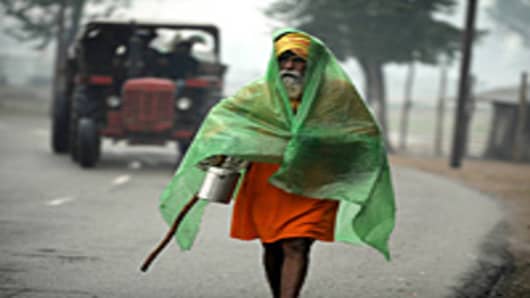Despite their meteoric economic ascent, the BRICs are not created equal when it comes to energy — and that's abundantly clear this summer.
The BRIC world divides starkly between the “haves” and “the have nots," and look for this this factor, more than any other, to define the growth of the Brazilian, Russian, Indian and Chinese economies in the future.
The Russian Federation is a “have,” vying for top billing with leading OPEC oil producer Saudi Arabia. Many economists have speculated on the long-term effects that relying too heavily on energy exports will have on the Russian economy, but for the moment, oil and natural gas exports pay the bills.
Brazil is in transition, having last year, for the first time in its history, become a net energy exporter. It is unclear at present how much Brazil’s massive offshore southern Atlantic oil and natural gas fields will eventually contribute to the country’s “bottom line,” given the billions of dollars needed to develop and tap the resource.
China and India, both net energy importers, represent the paradigms of what seems to be the 21st century incipient economic clash — China’s authoritarian “managed capitalism” model versus India’s shambolic but undeniably successful freewheeling capitalism.
And reliable energy supplies are a good barometer.
Last month China's State Grid authority announced that the nation's electricity supply is expected to be relatively tight from June to September' as electricity consumption in 26 provinces is projected to grow 9.3 percent from 2011 levels.
China State Grid Corp. Work Safety Department director Yin Changxin said, "Even though we have a better supply-and-demand situation this summer, the power load will continue its two-digit growth once the economy rebounds."
The China Electricity Council, CEC, warned that some parts of the country will experience severe blackouts this summer because of an electricity shortage of 30-40 million kilowatt hours. According to the CEC's estimates, China's more developed eastern and southern regions will bear the brunt of the problem, followed by north and central China.
But while China is merely predicting “tight” power supplies, India is wilting under a torrid tropical summer, gripped by severe power generation shortfalls that have produced 16-hour electricity blackouts in some regions.
This is a result of a shortage of fuel and the shaky state of utilities, savaging the country’s power sector’s finances and payment schedules, particularly in northern India, which in May had a deficit of 3,000 megawatts, as demand soared due to a heat wave.
In a scenario playing out across India, the Punjab State Electricity Board, PSEB, is now imposing scheduled power cuts of two-three hours daily in Mohali, where residents are already enduring unscheduled cuts.
PSEB officials said that residents will have to put up with the power cuts until the demand comes down, which will occur only when it rains, noting that electrical demand has already unexpectedly increased by 23 percent this year in Punjab, with PSEB passing the rupee by stating that they have not been able to buy more power to meet demand.
A PSEB spokesman explained to the press that the north region load-dispatch center, NRLDC, is the culprit because it has not allowed PSEB to buy more power to meet the demand.
"All the interstate power is bought through NRLDC but their systems have been under pressure due to overloading as all the eight northern states under them have been drawing additional power due to higher demand, which has further lead to overloading in the northern grid. In such a situation we have no option, but to impose power cuts whenever the load is more," said the PSEB spokesman.
Casting about for other guilty parties, the PSEB blamed consumers, "Every year we give one to two months time to consumers for declaring the actual load they are utilizing but people still don't declare it, which further leads to a demand and supply gap as the demand is much higher than what we expect."
In both China and India, whose astounding economic growth has been produced within the current power capacity, the priority on energy supply is clear – industry comes first and consumers second, however much such a policy might inconvenience them.
But unlike China, the Indian electorate votes, and such a cavalier approach to consumer power concerns may yet to prove a future electoral issue, especially as Pakistan is planning to import 500 megawatts of electricity daily from India and has asked the World Bank to prepare a feasibility study.
A sure vote winner if there ever was one.
—This story originally appeared on Oilprice.com.


